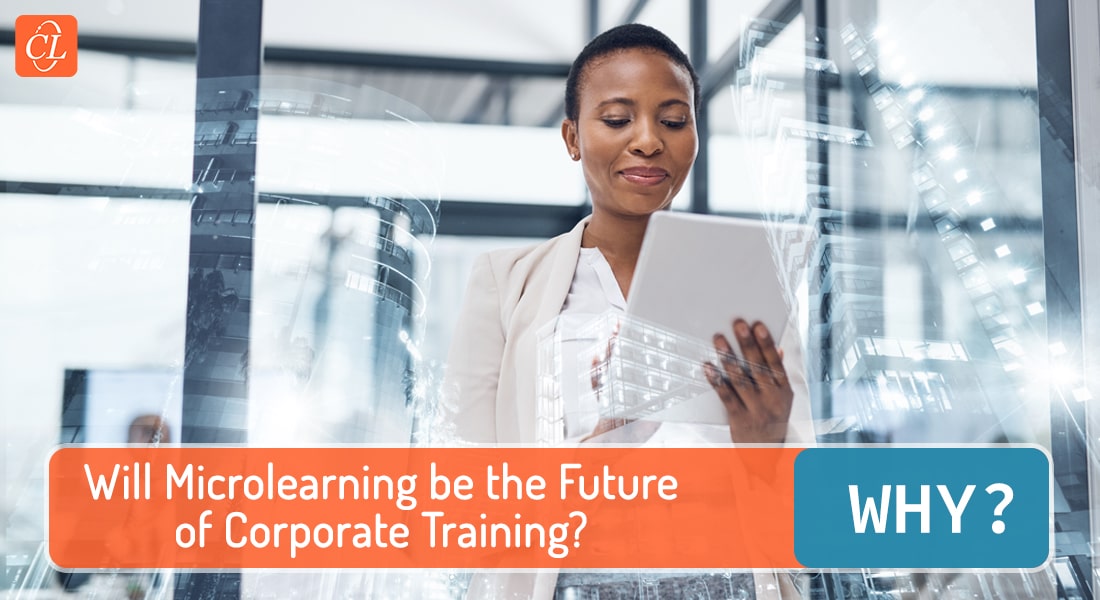7 Trending Corporate Training Methods Organizations Are Using Today – Are You?

When it comes to corporate training, there’s no magic bullet or one-size-fits-all method. Fortunately, there are several effective methods that you can employ singularly or in conjunction with each other to train your workforce and prepare them for your company’s future projects.
The right approach to employee training can create a happy, productive workforce. Despite its many benefits for employees and organizations, training is perceived by most as tedious and repetitive. Fortunately, following the pandemic and with the emergence of digital technologies as well as the introduction of remote and hybrid workspaces, the practice of corporate training has had a 360-degree turnaround.
What’s New in Today’s Corporate Training Landscape?
Explore how organizations are leveraging the following, and more!
- Virtual Instructor-led Training (VILT)
- eLearning
- Blended Learning
- Coaching
- Group Discussions and Activities
In the new normal that we live in, organizations can use a variety of corporate training methods to incorporate their employees’ specific learning needs, speed up the learning curve, and optimize organizational productivity.
In this blog, we’ll talk about eight methods training managers can use to strategically enhance employee training and growth.
Importance of Employee Training
Corporate training programs are essential for organizations looking to enhance their team’s performance. The importance of training can be seen in the following.
Industry and Technology Transformation
The core purpose of corporate training is to help employees stay up to date with the market including changes in technology, rules, standards, and practices. The business world is rapidly transforming and slowly but surely digitizing its processes. It doesn’t matter which industry you represent or what level you’re working at, keeping pace with the latest tools and solutions is crucial.
Explore eLearning trends of 2022 for the hybrid, virtual corporate world!
Role Advancement
Many organizations assign new and more advanced roles to employees, which requires them to pick up new skills and concepts and receive training to carry out their new roles effectively.
Soft Skills Development
Emotional intelligence, communication, adaptability, teamwork, creativity, and leadership are all examples of soft skills and are critical to both individual and organizational success. These skills allow employees to use their core competencies and skills effectively and efficiently.
7 Trending Corporate Training Methods Organizations are Using Today
The most popular corporate training methods include:
1. Instructor-led Training(ILT)
Instructor-led training is amongst the oldest training methods in the corporate sphere. Yet, it remains quite popular, especially with people returning to the workplace.
This form of in-person training is effective for decoding laborious topics as it allows instructors to answer employees’ questions and engage with them in real-time. However, it does have a few drawbacks, including arduous implementation expenses and time-period. Nonetheless, it results in a statistically higher rate of completion as compared to other methods of training.
2. Virtual Instructor-led Training (VILT)
With thousands of businesses conducting their operations remotely, it was nearly impossible, during the pandemic, for businesses to conduct in-person instructor-led training sessions. This is where VILT (virtual instructor-led training) came in. It offered a smarter alternative where trainers could upskill their employees in a virtual environment using digital media.
3. eLearning
eLearning typically involves using formats such as online videos and quizzes. This method is much more flexible than VILT as it allows learners’ access to training material anytime, anywhere, and on any device.
During the pandemic, many companies with a large workforce used eLearning as the go-to solution to train their remote employees. Many companies hired eLearning vendors to create gamified training material with interactive activities, videos, and tests. Just as in the case of instructor-led training, eLearning too brings its unique set of challenges.
For instance, low-quality online courses can be counterproductive and ineffective. Secondly, for many companies, keeping eLearning courses and material updated can be challenging unless they outsource the task to third-party providers.
Become an eLearning Champion!
4. Blended Learning
Blended learning effectively combines elements of instructor-led training and eLearning to create the best of both worlds. This method allows trainers to improve training outcomes by using technology such as electronic media, learning management systems, and emails to integrate conceptual learning and practical training strategies into one balanced program.
5. Coaching
Coaching focuses on enhancing the relationship between the employee and their manager by building participants’ emotional intelligence quotient and their communication style. This in turn enables employees to come out of their comfort zones and share their ideas with managers. It also helps them take on more important roles and inspire others.
6. Group Discussions and Activities
Trainers need to conduct group discussions and activities with a specific group of employees, typically those that need to constantly collaborate in asynchronous meetings to maximize their productivity. Depending on the urgency or complexity of the training topic, these discussions can be held online through VILT sessions.
7. Buddy Training
Buddy training occurs when managers or supervisors pair training participants with employees who already possess a certain skill or understand a particular role. They become “buddies” where participants shadow their assigned partners to learn how to function new roles. Many modern organizations use this program to enhance new employee proficiency on the job.
In many cases, employees train newcomers to take over their role while moving on to a different one.
Factors to Consider Before Choosing a Training Method
If you’re at a crossroads and unable to decide which training method to go for, then here are four essential factors to consider that will help you choose the right one.
1. Demographics
Younger employees might be more comfortable with eLearning and buddy training. Moreover, older generations of employees would be more likely to prefer in-person training. Social learning works well with the current generation who could find themselves in teams where collaboration is prioritized over competition and individualism.
2. Nature of the Job
eLearning is recommended for employees who are on the go as well as for organizations that operate in multiple locations. Furthermore, participants who have a greater capacity and interest for learning can fare better where there is active participation and interaction.
3. Constraints
No matter which corporate training method you choose, you must bear the cost of planning an in-person training session or creating an online course. Therefore, you should stick to the most cost-effective method for your specific training requirements and ensure its implementation is rapid and convenient.
4. Individual vs. Group Learning
In a situation where a large number of employees need to learn a certain skill or concept, you must consider social learning strategies such as group discussions, activities, and blended learning. Similarly, training a smaller number of employees can be accomplished through an online course using assignments and coaching techniques.
Parting Thoughts
Employees tend to stay longer with those companies that regularly invest in their corporate training courses. By implementing employee training, you’re effectively equipping your employees with the tools, skills, and solutions to improve your bottom line.
However, if you’re looking to maximize your training outcomes, you need to consider implementing blended learning. Do you want to accelerate the time within which your employees gain proficiency and begin to meet their targets? If you have answered yes to these questions, then you need to get a hold of this comprehensive guide. It will help you design blended learning solutions that are just right for your employees as well as for your organization!





